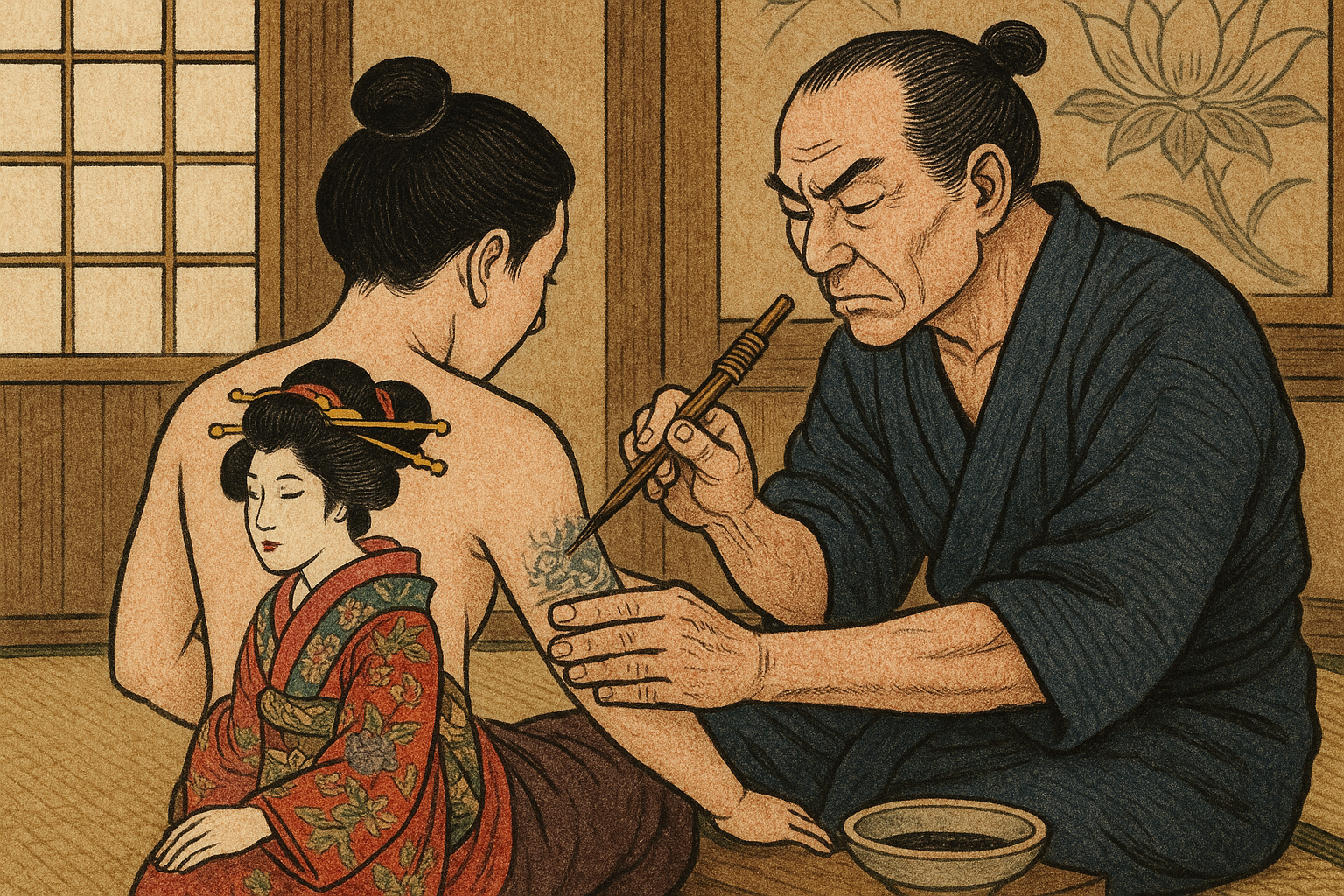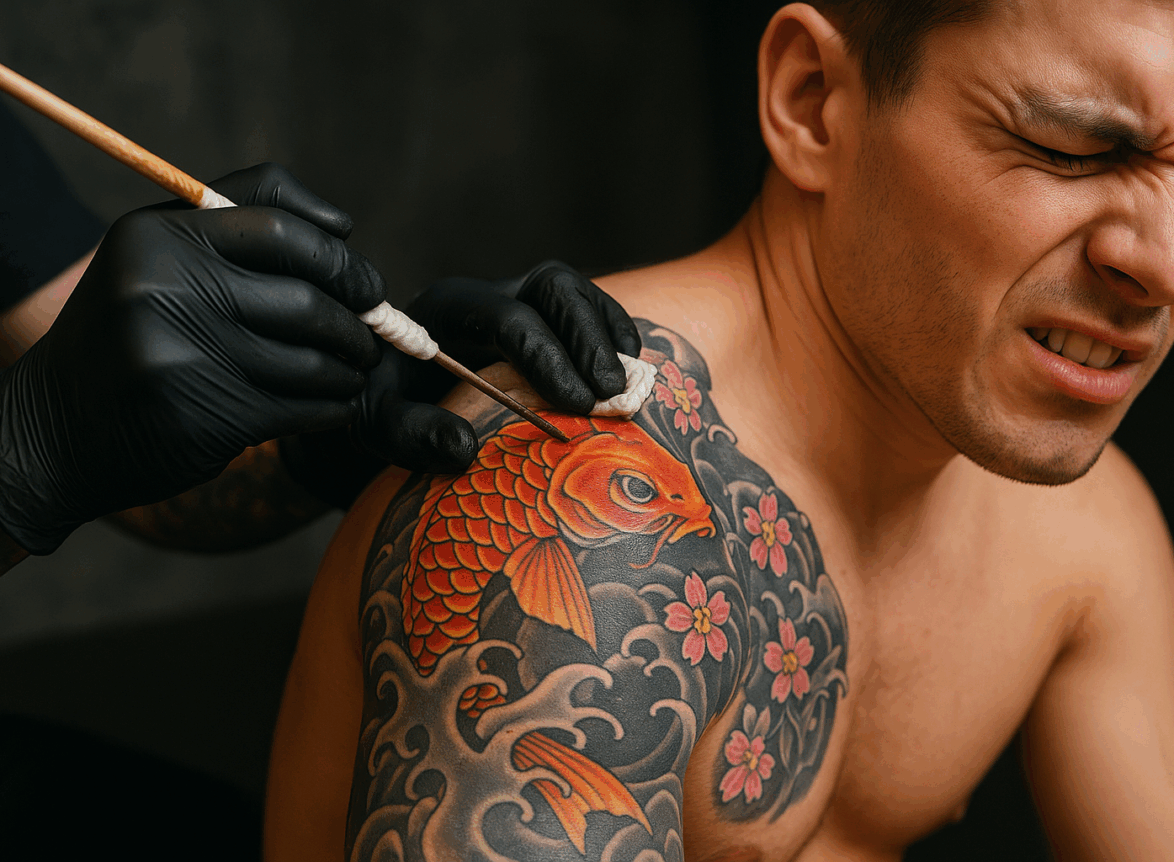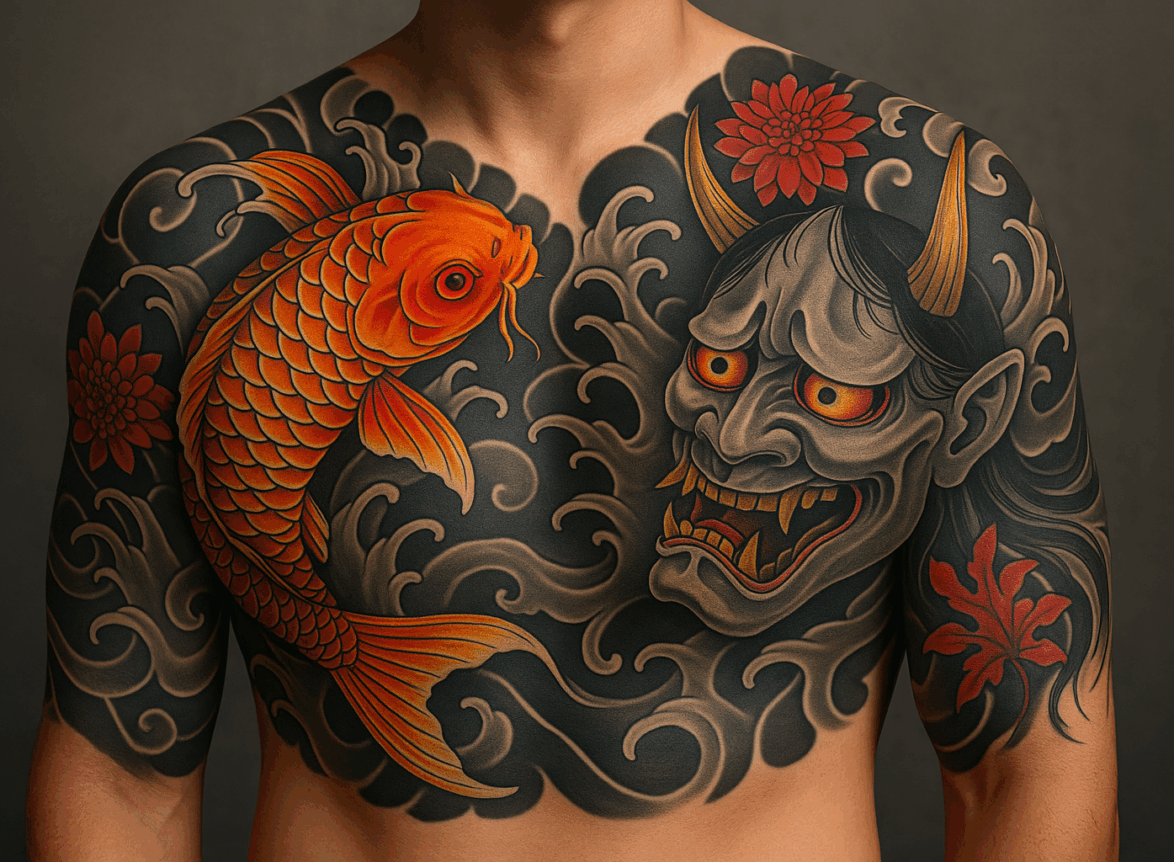Not all tattoos are stories. Some are just decoration, trend, or boredom masquerading as rebellion.
But if you’re looking for a geisha irezumi — something precise, mythic, and dripping with restrained power — then you’re not looking for a trend. You’re looking for a mirror. A ritual. A way to wear your silence, survival, or sensuality in a language that doesn’t fade.
And you need an artist who knows what the hell they’re doing.
This is your field guide. Whether you identify with the geisha’s quiet sovereignty or want to wear her as a personal symbol of feminine resistance, here’s how to find a tattoo artist who won’t flatten your vision into another cheap imitation.
1. Know What You’re Actually Asking For
First: the geisha is not a sex worker. That’s oiran. The geisha is an artist trained in silence, music, dance, and discipline. She is an archetype of control and beauty within structure. She doesn’t offer her body; she offers presence, intellect, and poise.
So when you choose her, you’re not choosing seduction. You’re choosing mastery under pressure.
You need an artist who understands the cultural difference between geisha, oiran, and the distorted versions seen in Western media. If your artist can’t explain the difference between the obi tied in front (oiran) vs. back (geisha), walk away.
2. Reject Surface-Level Aestheticism
If an artist says, “Oh yeah, I can do a hot geisha girl for your forearm,” you’re in the wrong chair. This isn’t about sexy ink. It’s about symbolic embodiment.
Real irezumi isn’t aesthetic first. It’s narrative, flowing, and deeply respectful of lineages. A proper geisha tattoo isn’t a pin-up girl with chopsticks in her hair. It’s a woman mid-movement, head turned slightly, hair lacquered into discipline, eyes soft but unreadable.
The kimono matters. The parasol matters. Even the background (waves? sakura? clouds?) has to mean something.
3. Study Their Portfolio Like You’re Reading a Book of Spells
When reviewing an artist’s work, you’re not looking for how “cool” it looks. You’re looking for depth, structure, and respect.
Ask yourself:
- Do they draw women as subjects or just as ornaments?
- Do their figures hold narrative weight or just sit there looking pretty?
- Do their Japanese motifs flow with the body’s shape or interrupt it?
Red flags: exaggerated cleavage, fetishized poses, mashups like samurai-geisha hybrids (lazy, disrespectful), or anime-style distortions passed off as traditional irezumi.
You want someone who tattoos with reverence, not trend-chasing.
4. Understand That Irezumi Isn’t Just a Style — It’s a Ritual Craft
Authentic irezumi comes from a lineage of tattooers who often trained for years under a master. In Japan, it was outlawed and underground. Every mark made was a defiance.
Today, real irezumi artists (in or out of Japan) still work with:
- Tebori (hand-poking tools) or machine, depending on style
- Bold black outlines and traditional pigments
- A sense of mythic space on the body (sleeves, backs, ribs)
Ask your artist:
- “What does irezumi mean to you?”
- “Where did you learn the structure of Japanese bodysuits?”
- “How do you approach feminine figures differently from masculine ones?”
Their answers will tell you everything.
5. Placement Isn’t Just Personal — It’s Philosophical
Where you place your geisha matters.
Back piece? You’re declaring a private mythology. Something seen only when you choose.
Sleeve or rib? You’re threading her into movement and breath. You carry her through your gestures.
Chest or sternum? You’re bringing her close to the heart or the voice — she becomes your shield or your silence.
Work with an artist who doesn’t just ask “where,” but asks: “Why there? What does that space mean to you?”
6. Beware the Geisha-as-Aesthetic Trap
Let’s be blunt: geisha tattoos are often misused. They’re taken as exotic, erotic, or purely visual. But if your artist doesn’t understand that the real danger of the geisha is her restraint, then they will render her as a hollow mask.
You want someone who sees her as a symbol of:
- Emotional sovereignty
- Silent endurance
- Beauty as defense, not invitation
She doesn’t scream. She doesn’t fight. She remains. That’s power.
7. Ask the Artist How They Portray Female Power
This isn’t about gender politics. It’s about vision. Ask your artist how they portray women. Look at how they ink:
- Posture (upright, bowed, twisted?)
- Expression (defiant, sensual, blank?)
- Context (what surrounds her? What does she command?)
Are their women passive dolls or active forces? Can they draw a woman without turning her into a kink or aesthetic flourish?
If not, keep walking.
8. Trust Your Gut. This Is Spiritual Work.
When you sit in the chair, this isn’t just skin. This is memory, myth, survival, and mirror.
Your tattoo artist becomes your collaborator, yes. But in some ways, they’re also your witness. They hold the needle while you transform.
You’ll feel it in your bones if it’s the right fit.
9. Let the Tattoo Speak After It Heals
The best geisha tattoos haunt. They don’t just look good when fresh — they grow more mysterious as they age. A well-done geisha irezumi should still stir you five years from now. It should make you pause when you see her in the mirror.
Not because of how she looks. But because of who she is.
And who you had to become to wear her.
Final Words: She Is Not a Costume. She Is a Testament.
When people ask what your geisha tattoo means, you don’t owe them a damn thing.
Let them wonder.
Because maybe she was never meant to be explained. Maybe she was only ever meant to be worn.




Leave a comment
Your email address will not be published. Required fields are marked *